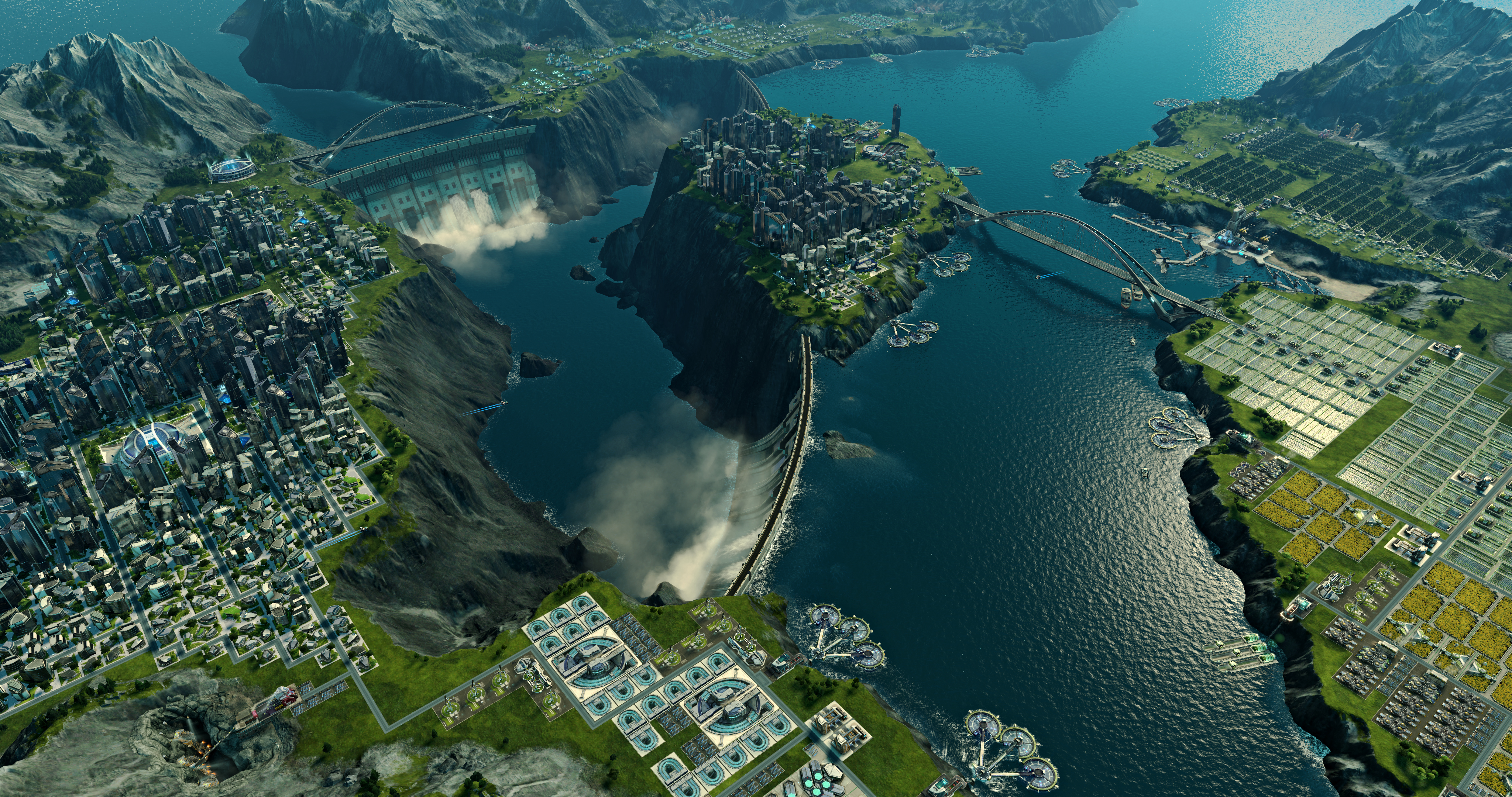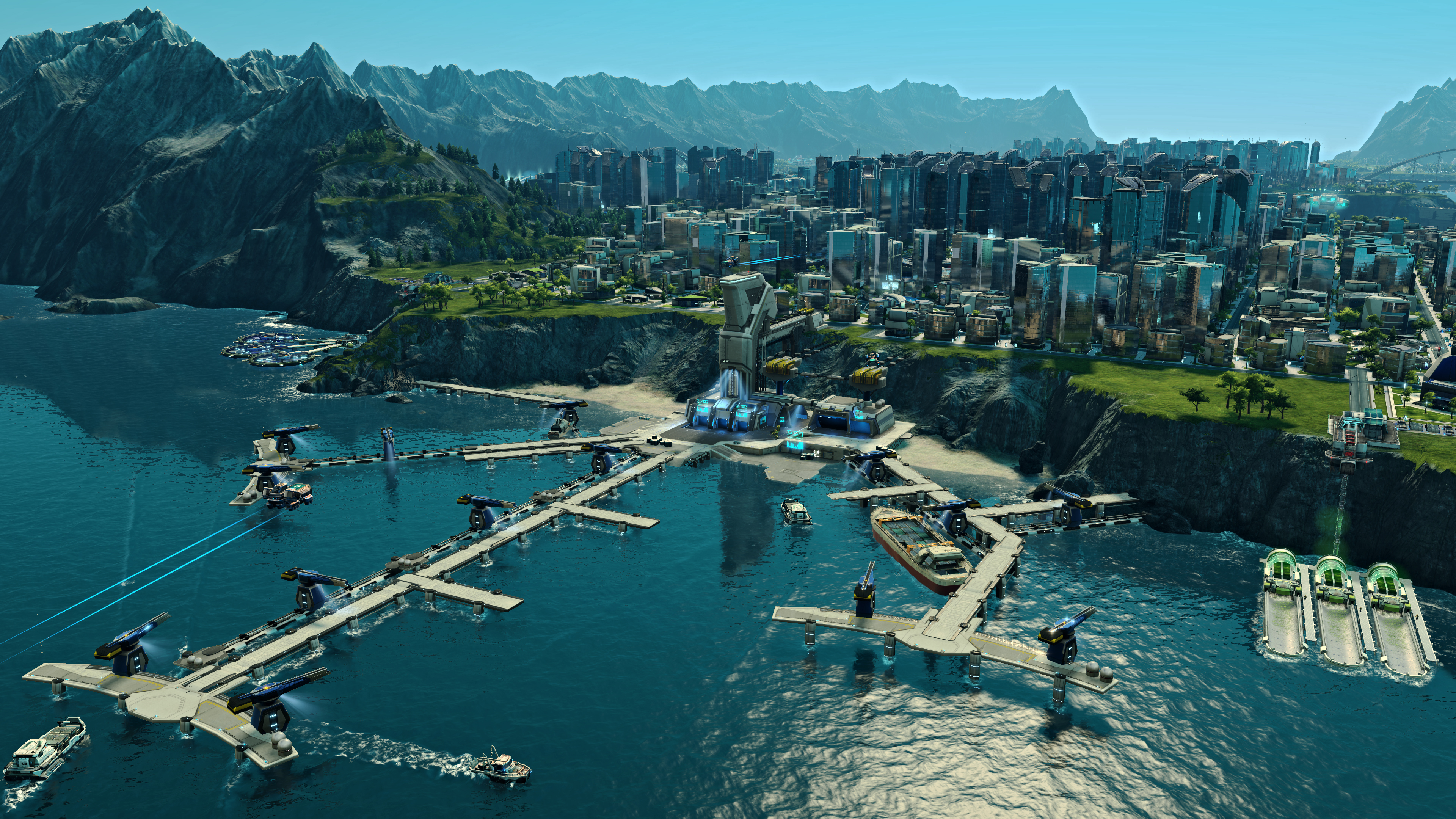Colonise earth and moon in Anno 2205

Anno 2205 is from Ubisoft’s newest studio, BlueByte Mainz—however, BlueByte Mainz is also Related Designs, an old studio that’s worked on the Anno games since 1995. This is Ubisoft’s newest strategy sim—however, it’s also of the Anno series, and experimentation isn’t in its nature. This is a game about the future and a game of the past.
Anno 2205 follows directly on from the previous Anno, 2070, a futuristic city-builder damned by its appalling uPlay implementation. The setting is again the future, but another leap forward, with the moon once again within mankind’s grasp. The game has you as a corporate leader managing cities on both Earth and the moon.
Notably, Anno 2205 is focused on being ‘multi-session’ so players will gradually build cities all over the Earth and head to the moon to build outposts. All your resources—whether moon or Earth-based—can be traded between your cities, allowing for specialisation, like the new SimCity once promised. “This is the most believable game world that we think we’ve created so far.” says Dirk Riegert, Creative Director.
The world you build certainly looks very shiny—not as beautiful as the stylised tilt-shift of Cities: Skylines perhaps, but it has a love of detail all its own. There’s a rugged extremism to the seas rolling beneath sharp-cragged mountains and the virgin plains. That’s a welcome contrast to soulless modernity of its steel-and-glass housing, which could be straight out of the Richard Rogers school of architecture, and to the Usborne Futures design of its manufactories. The way construction bots are cast underground out of hot metal, the equatorial spaceport has a space elevator, desalination plants look like sea-surface flat turbines, flying cars are everywhere, and the Arks from Anno 2070 are being mined for their tech—it’s all nostalgically Arthur C. Clark.

On the moon, there’s another visual language, all realistic and low-g, like the 1970s moon landings; the prefabs bunkers are squat, small and always low. The great mining engines scraping away at the regolith and KREEP for non-Earth minerals like Helium-3, are contrasted to the glassed-in hydroponics facilities, where racks of glossy plants rotate in a misty hothouse. Amidst them are field generators, top-heavy towers like sunflowers, to shield the buildings from the inevitable meteor impacts.
Those shield generators point to a big compromise, which makes the hard science-fiction man in me groan but which I completely understand; the decision that in the battle between science and gameplay, gameplay wins. “Of course, we try to combine it, to mix both aspects, but if we have to make a choice, it’s a game so gameplay comes first.” says Riegert. So, for example, unlike Cities: Skylines, the road traffic is just art and has no effect on the economy. Similarly, the studio has split the gameplay from Anno 2070, with street-based economies on earth and influence-area-based on the moon, so that the individual sessions are easier and layouts are more flexible. “That was a message from the players after 2070; they said that this was the maximum complexity that they could take.”
Notably, many of the factories and utilities in Anno are expensive to build, but modular and cheap to expand—for example, by adding another robot-pressing line. They can also be improved in a second way, by adding logistics support, robot workforce, or money-saving techniques, meaning their layout is extremely flexible. By contrast, very large structures, like bridges or dams, can only be built in particular locations.
Keep up to date with the most important stories and the best deals, as picked by the PC Gamer team.
Other sections hinted at wider specialisation—your company levels up as your population increases, facing off against other companies, and allowing you to progress up a tech tree which was a blank slate in the version we played. There were also two types of grayed-out maps visible on the Earth map that we weren’t allowed to play. I'm guessing that these are either a different biome, quest-oriented maps with specific events, or maps reintroducing the combat that’s currently conspicuous by its absence. Aside from the city-building, there are also wanderers on the Earth and Moon who give you quests but they weren’t implemented.

Our only concern is the speed with which we completed the game’s main city-building content. I had a single hands-on session lasting barely an hour, with an alpha build and a pile of resources. Within that, we managed to build cities on the Earth and the moon at the highest level. Of course, quests, limited resources and varied landscapes will extend the lifespan, as they did for Banished, as will your own quest for perfection, but it’s a little worrying.
The Anno model was rather archaic before it made 2070’s brave leap into the future. 2205’s timeline jump isn’t as big, but its new mechanics are promising. I'm still not entirely sure why the numbers always add up to 9, but it certainly makes remembering the series easier - 1404, 1503, 1602, 1701, 0009…

